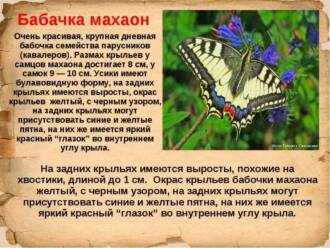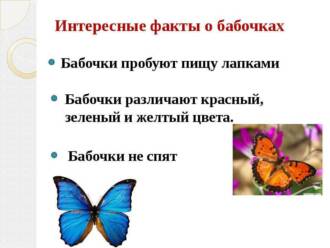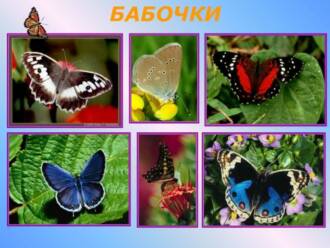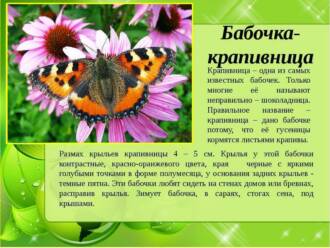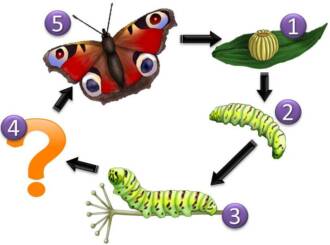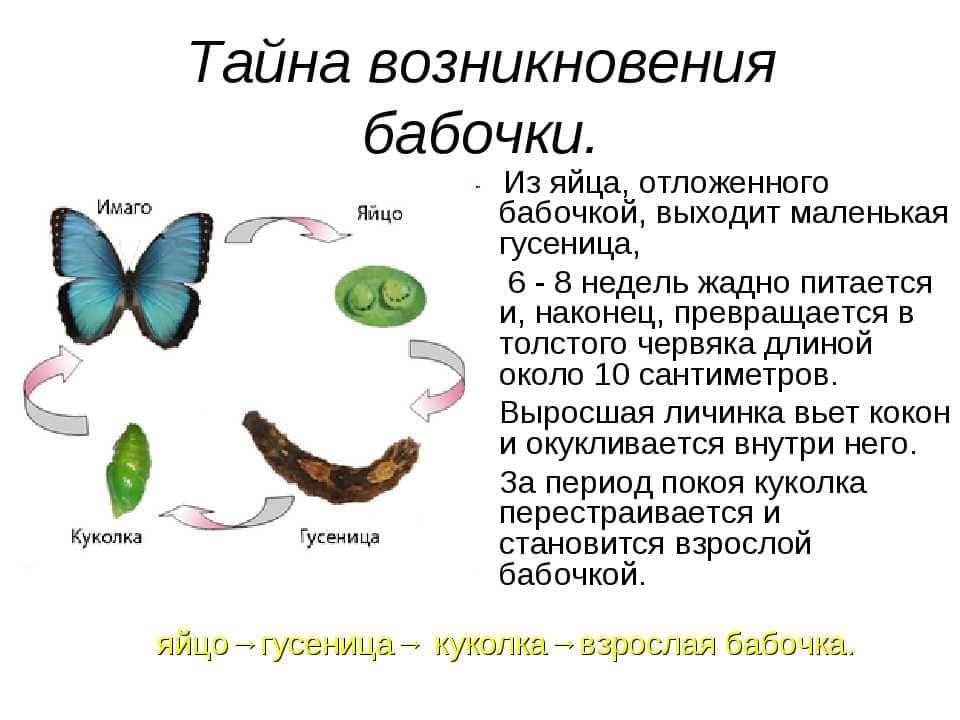
The development of a butterfly is an amazing process that can be very interesting for children. A butterfly goes through several stages of its development, starting from an egg and ending with an adult insect. Each stage of the butterfly's life cycle has its own characteristics and interesting facts that can be studied and used for exciting games and experiments.
The first stage of a butterfly's development is the egg. Butterfly eggs come in many shapes and colors, and each species of butterfly has its own unique eggs. Children can study different types of eggs and learn what they look like and what butterflies hatch from them.
The second stage of a butterfly's life is the caterpillar. The caterpillar is the most active and hungry stage of a butterfly's life. Caterpillars eat a lot of food to build up their strength and prepare for the next stage. Children can watch caterpillars and learn how they eat and grow. Playing "caterpillar racing" can be a great way to learn about this stage of development.
The third stage of butterfly development is the chrysalis. The chrysalis is the dormant period during which the caterpillar transforms into a butterfly. Chrysalis can come in many shapes and colors, and each species of butterfly has its own unique chrysalis. Children can observe chrysalises and learn how they change over time. Playing “chrysalis hunt” can be a fun way to explore this stage of development.
The life cycle of a butterfly is an amazing natural phenomenon that can be interesting and educational for children. Using games and experiments, children can learn more about the development of butterflies and enjoy the process of observing them.
The main stages of the life cycle of a butterfly
Butterfly development for children is an exciting journey into the world of nature. The life cycle of a butterfly goes through several stages, each of which is unique and interesting.
1. Egg
The first step is the egg. The butterfly lays eggs on plants that will serve as food for future caterpillars. Eggs can be of different shapes and colors, depending on the type of butterfly.
2. Caterpillar
A caterpillar emerges from the egg. The caterpillar actively feeds in order to gain strength for the subsequent transformation into a chrysalis. The caterpillar can change its color and size as it grows.
3. Pupa
When the caterpillar reaches a certain age, it turns into a chrysalis. Inside the chrysalis, a transformation takes place - the caterpillar turns into a butterfly. The pupa can have different shapes and colors, it is motionless and hung on a plant or other suitable surface.
4. Butterfly
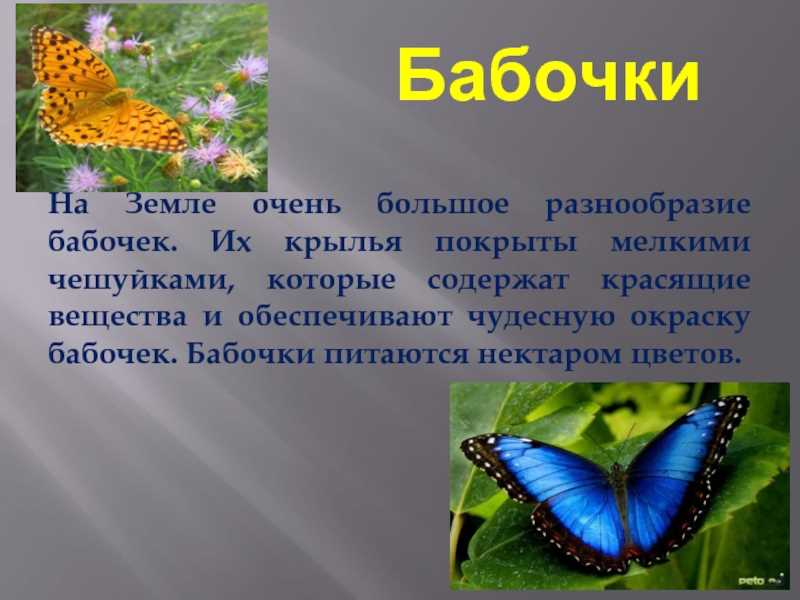
A butterfly comes out of the chrysalis. She frees herself from her cocoon and unfolds her wings. The butterfly is ready for flight and adult life. Butterfly wings are covered with beautiful patterns and come in many shapes and colors.
Butterfly development for children is an opportunity to learn more about nature and observe the amazing stages of transformation of these beautiful insects.
Egg
The egg is the first stage of butterfly development for children. It is small, round or oval in appearance, and can be of different colors: white, yellow or green.
Butterfly eggs are usually laid on the leaves of plants, which are food for future caterpillars. A mother butterfly can lay from a few dozen to several hundred eggs, depending on the species.
Inside the egg, the process of development of the butterfly takes place. Within a few days or weeks, a small caterpillar emerges from the egg. It hatches with a sharp prong called a blade.
Butterfly eggs are amazing because they already contain everything necessary for the development of a future butterfly. They contain nutrients and energy reserves that will allow the caterpillar to grow and develop.
The egg is the first step in the fascinating life cycle of a butterfly. It represents the beginning of the entire process that will take place from caterpillar to chrysalis to adulthood. By guessing what will be inside the egg, children can follow the butterfly's development with fascination and observe all the stages of its transformation.
Caterpillar
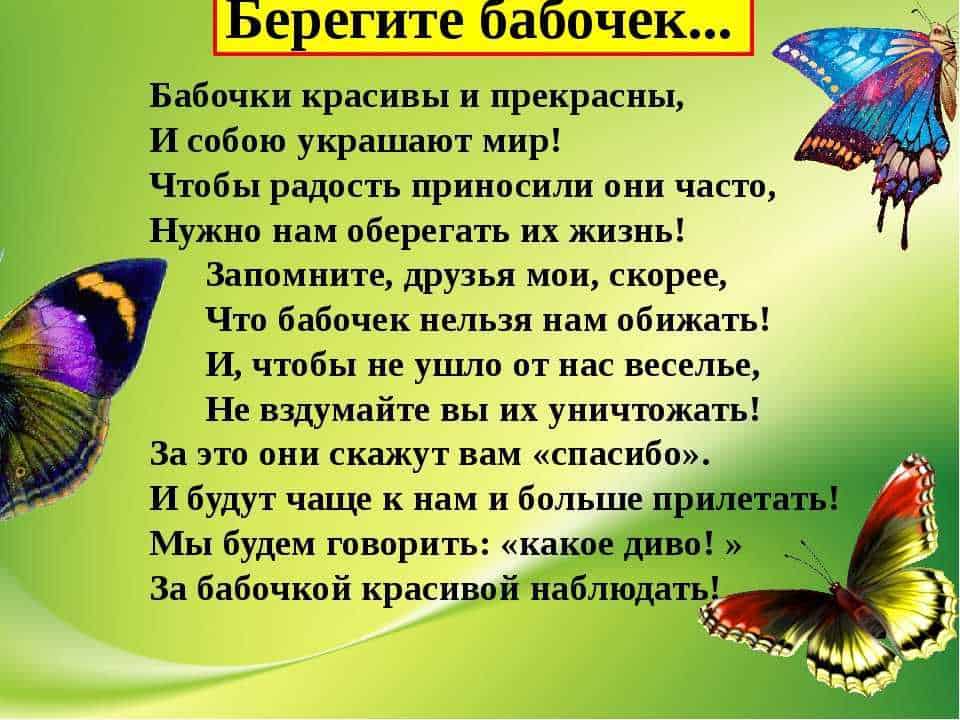
The caterpillar is the first stage in the development of a butterfly for children. She is born from an egg that a female butterfly lays on a suitable plant. The caterpillar actively feeds on the leaves of plants in order to gain strength for the next stage of its development.
The caterpillar has many legs that help it move on the surface. It also has small eyes and sensitive tentacles that help it navigate its environment.
The caterpillar grows and changes its appearance during the molting process. She sheds her skin to grow and become bigger. This process is repeated several times until the caterpillar reaches its final shape.
Interesting fact: Some caterpillars have bright colors that serve as a defense mechanism. They may resemble poisonous animals or use camouflage to hide from predators.
Once the caterpillar reaches its final form, it prepares for the next stage of its development – becoming a pupa. The caterpillar spins its cocoon or hides in a suitable place where it will be safe from external influences.
chrysalis

Butterfly development for children begins with a small chrysalis called an egg. Butterfly eggs are very small and usually have different shapes and colors. They can be round, oval or cylindrical.
Eggs butterflies are usually deposited on the leaves of plants, which will be nutritious for future caterpillars. When the egg hatches, a small caterpillar emerges from it.
Caterpillar — This is the second stage of butterfly development. The caterpillar grows and develops, feeding on leaves and other plants. It constantly grows and periodically moves to new food to get more nutrients.
In the process of its development, the caterpillar passes through several stages, which are called larvae. Each larva has its own unique shape and coloration, and these can be very different in different species of butterflies.
Once the caterpillar has grown and collected enough nutrients, it begins to prepare for its final stage of development - chrysalis. The caterpillar weaves its chrysalis from a silky material secreted by its head glands.
The pupa is a protective shell within which the caterpillar transforms into a butterfly. Inside the pupa, magical changes occur, as a result of which the caterpillar turns into a beautiful butterfly.
Larva

The larva is the first stage in the development of a butterfly. It emerges from an egg and doesn't look like a butterfly at all. The larva has a small body and no wings. It usually has a cylindrical or caterpillar shape and is covered with soft hairs.
The larva is very actively growing and developing. She constantly eats to get all the necessary nutrients for her development. The larva usually feed on plant leaves, which may be their main food source. It can cover long distances to find suitable food.
At this time, the young larva passes through several molts, during which it sheds its old skin and grows a new one. This process is called molting. Each molt helps the larva to grow and develop until it is ready to become a pupa.
The larva is an amazing creature that goes through incredible changes before becoming a beautiful butterfly. Butterfly development for children is an interesting topic that helps to learn about the process of turning a larva into a chrysalis and, finally, into a butterfly.
Metamorphosis
Butterfly development for children is an amazing process called metamorphosis. Metamorphosis is the transformation of one life form into another. In butterflies, metamorphosis occurs in several stages: egg, caterpillar, chrysalis, and finally, an adult butterfly.
The first stage is the egg. The butterfly lays eggs on the leaves of plants, which will become food for the caterpillars. The eggs are small and round, often brightly colored. Caterpillars hatch from the eggs and begin their development.
The second stage is the caterpillar. The caterpillar is the most active stage of the butterfly's development. It constantly eats to gain strength and grow. Caterpillars have a soft body and many legs. They periodically molt to grow and develop.
The third stage is the pupa. When the caterpillar grows and becomes large enough, it turns into a pupa. The pupa is a special protective cover, inside which changes occur. At this point, the caterpillar turns into a butterfly.
The fourth stage is the adult butterfly. When the metamorphosis process is complete, the chrysalis splits and the adult butterfly flies out. It has wings that it unfolds and begins to flap. The adult butterfly searches for food, reproduces, and begins the development cycle anew by laying eggs.
adult butterfly
Butterfly development for children is a fascinating process in which the adult butterfly plays an important role. After going through all the stages of development, the butterfly emerges from the chrysalis as an adult and ready to fly.
An adult butterfly is a beautiful and delicate creature that can fly and feed on flower nectar. It has a pair of wings that are covered with bright and varied patterns. The butterfly can travel long distances, and its flight is a real decoration of nature.
The adult butterfly also plays an important role in the breeding process. She is able to lay her eggs on the leaves of plants, which then become food for hungry caterpillars. Thus, an adult butterfly ensures the life cycle of butterflies and the continuation of their kind.
It is interesting for children to observe adult butterflies, to study their diversity and learn new facts about them. You can take a walk in a park or garden where various types of butterflies live and try to find them. You can also create special food for butterflies to attract them to your garden and observe their behavior.
Interesting facts about butterflies

Butterflies are incredible creatures of nature. Their diversity is amazing and inspires to explore their amazing world. Butterfly development for children is a unique opportunity to get to know these beautiful insects and learn many interesting facts about them.
1. Metamorphoses
Butterflies go through an amazing developmental process called metamorphosis. Their life cycle consists of four stages: egg, caterpillar, pupa and adult butterfly. Each stage has its own characteristics and duration. For example, a caterpillar eats leaves to gain strength before turning into a chrysalis.
2. Variety of colors
Butterflies are true artists of nature. Their wings are decorated with a wide variety of colors and patterns. This helps them attract attention and divert it from enemies. Butterflies can be bright red, blue, green, orange and even transparent. Each species has its own unique coloration that helps it survive in the environment.
3. Migrations
Some species of butterflies make amazing migrations over vast distances. For example, monarchs fly from North America to Mexico every year to spend the winter in warmer climes. They travel thousands of kilometers using sophisticated navigation mechanisms based on the sun and the Earth's magnetic fields.
4. Significance for the ecosystem

Butterflies play an important role in the ecosystem. They are the pollinators of many plants, helping them to reproduce and providing their genetic diversity. Without butterflies, many plant and animal species would not be able to survive. Therefore, the protection of butterflies and their habitat is an important task for the conservation of biological diversity.
Butterflies can see ultraviolet light
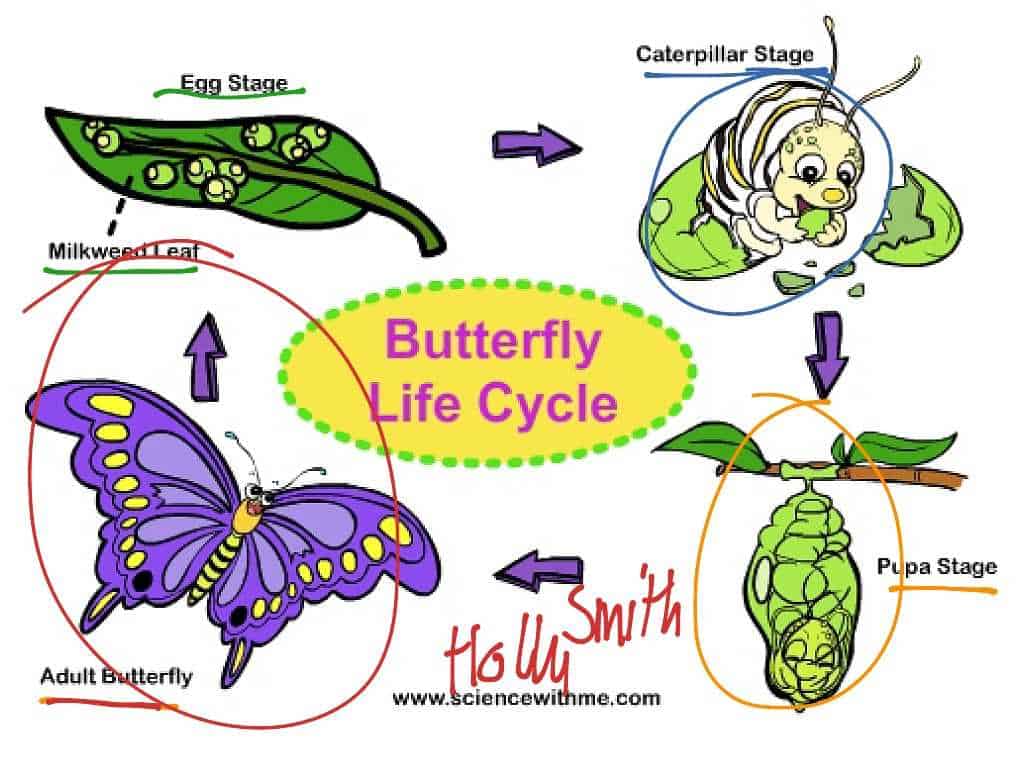
Butterfly development for children is an exciting journey into the natural world. One of the amazing facts about butterflies is their ability to see ultraviolet light. Ultraviolet light is part of the electromagnetic spectrum that is invisible to the human eye but visible to many butterflies.
UV light has many useful functions for butterflies:
- It helps them identify flowers that contain nectar, as many flowers have ultraviolet hues that are invisible to us.
- Butterflies also use ultraviolet light to navigate and find a breeding partner. In many butterfly species, males and females have different ultraviolet patterns on their wings that help them recognize each other.
- Some butterflies use ultraviolet light to protect themselves from predators. For example, some species of butterflies have ultraviolet patterns on their wings that look like the eyes of a predator. This makes predators think that the butterfly is dangerous and scares them away.
Interestingly, children can also see ultraviolet light using special filters or light filters. This can be a fun experiment, allowing them to better understand the world of butterflies and their perception of the environment.
Butterflies can fly thousands of kilometers
Butterfly development for kids is a fascinating journey into the world of insects. One of the amazing facts about butterflies is their ability to fly huge distances. Some species of butterflies can migrate thousands of kilometers, traveling from one place to another.
An example of such a migration is the radiant dove marathon. It starts from the American North and continues through Mexico and Central America to South America. Impressive flight, right?
How can butterflies fly such a distance? The answer lies in their ability to fly and use the wind to their advantage. Butterflies migrate in large flocks, taking advantage of the warm winds that help them travel long distances.
Such amazing journeys of butterflies are part of their life cycle. Travel helps them find new food sources and ideal breeding conditions. For children, this is a great opportunity to learn about different types of butterflies and their ability to travel long distances.
Butterflies are able to travel in a flock
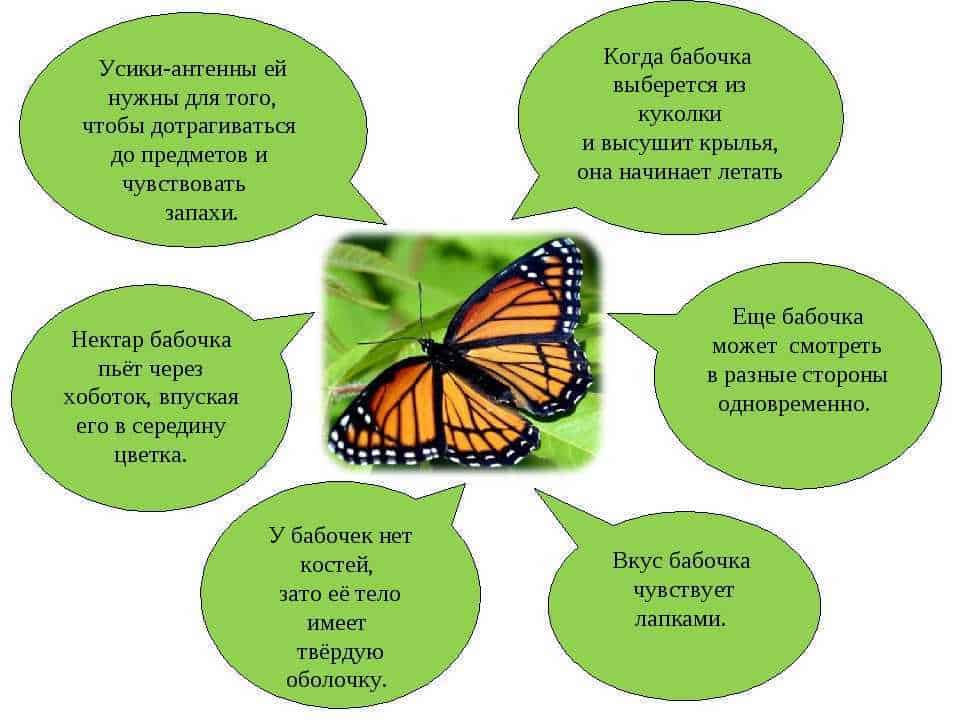
Butterfly development for kids can be a fun and interesting activity. One of the amazing facts about butterflies is that they are able to travel in a flock. When the time of migration comes, some species of butterflies unite in huge flocks and go on a long journey.
In such a flock there can be hundreds and thousands of butterflies of the same species. They fly together following a specific route. This allows them to increase their chances of survival and successful reproduction. Traveling in a flock provides the butterflies with protection from predators and makes it easier to find food and places to rest.
When butterflies fly in a flock, they communicate with each other using special sounds and chemicals. This helps them coordinate their movements and stay together. This collective approach to traveling in a flock allows butterflies to travel long distances and successfully reach their destination.

